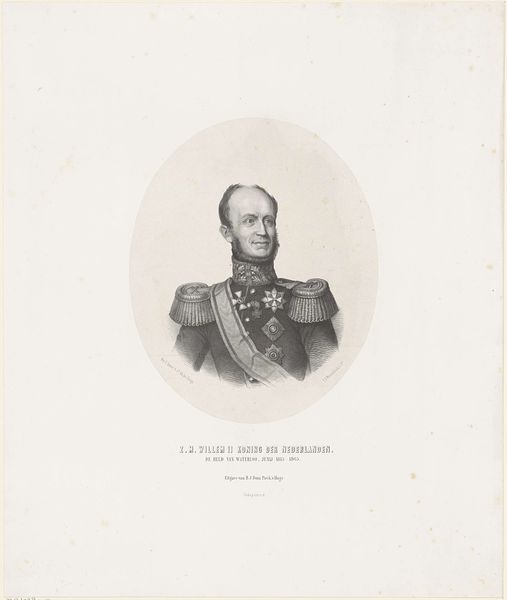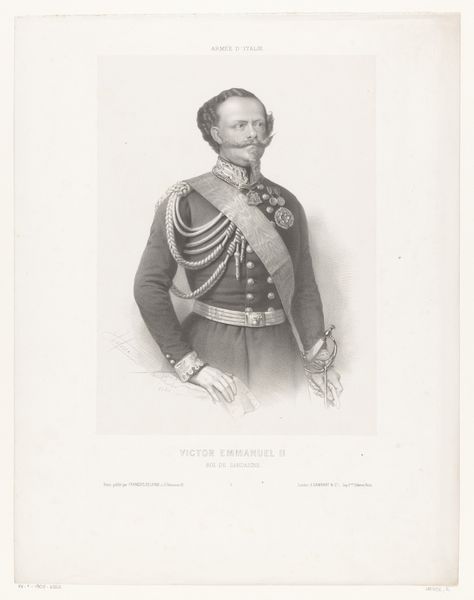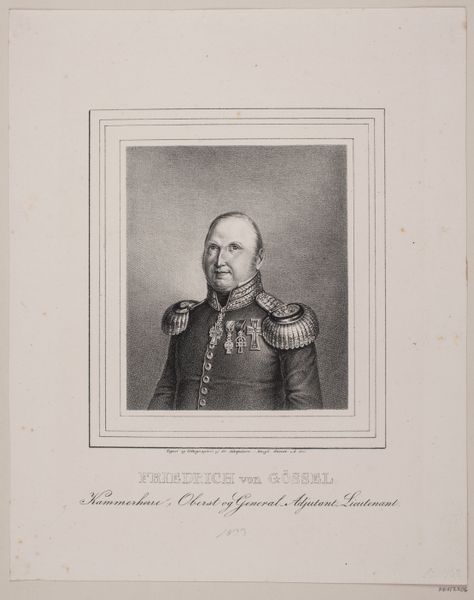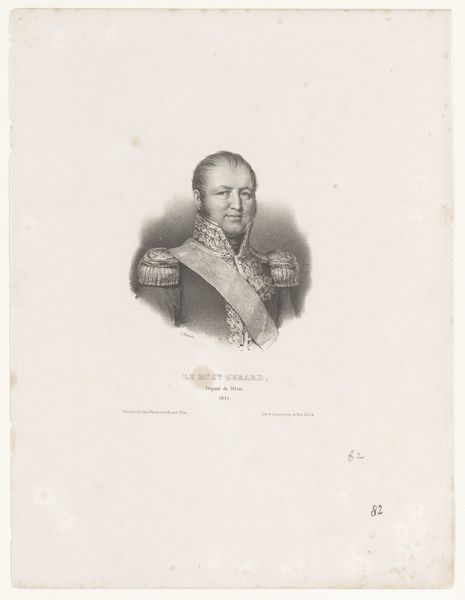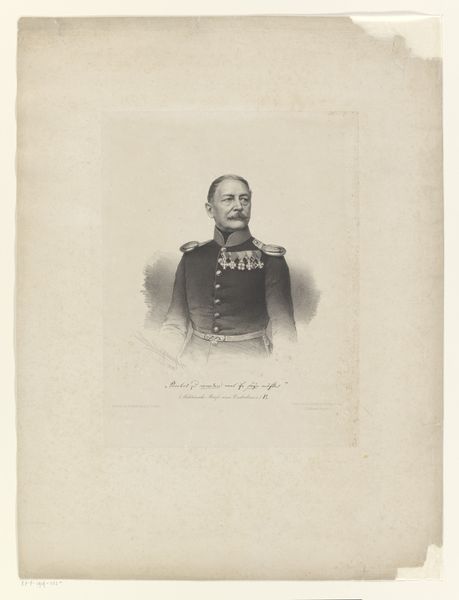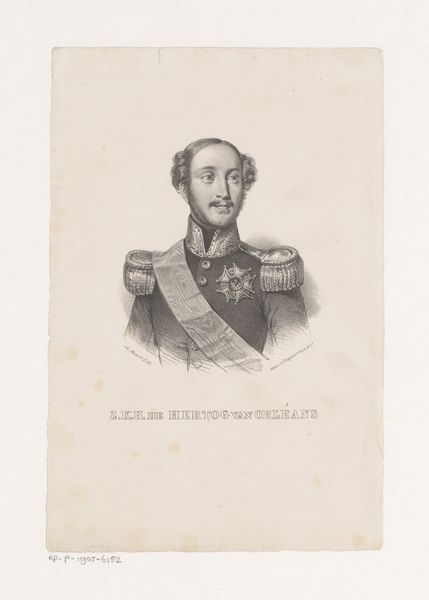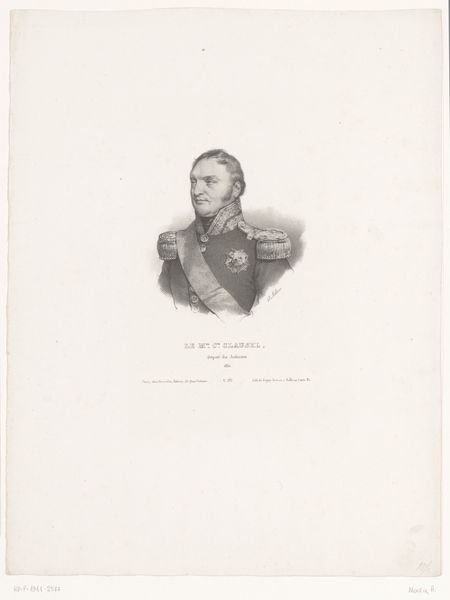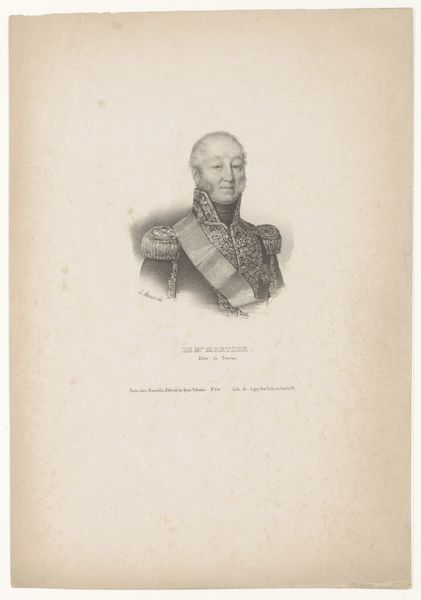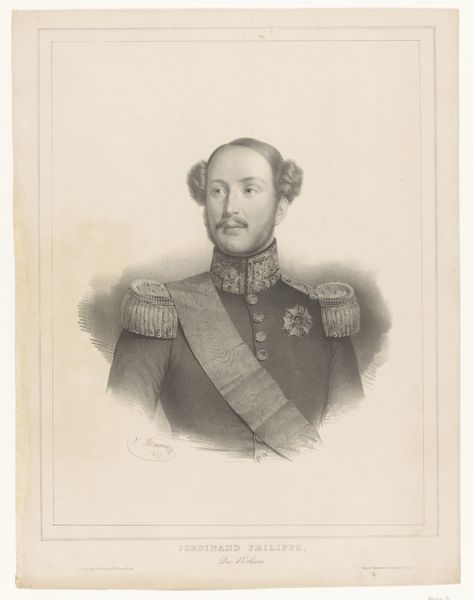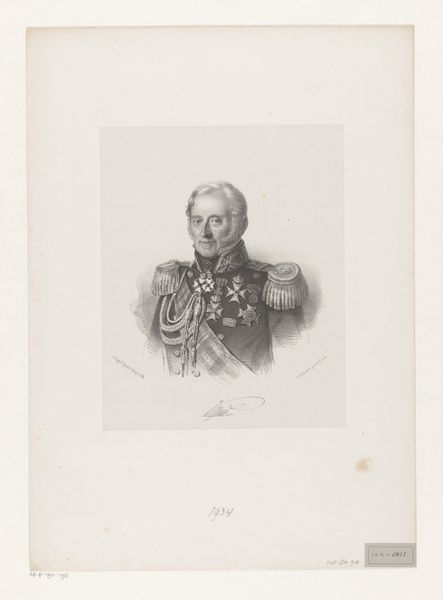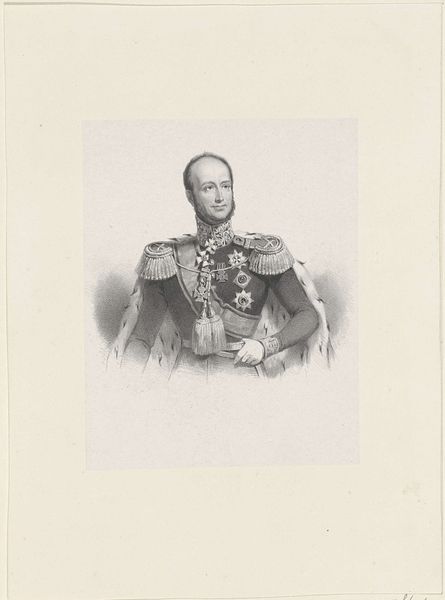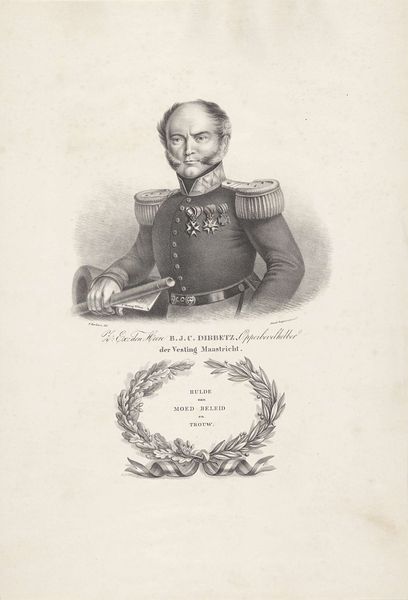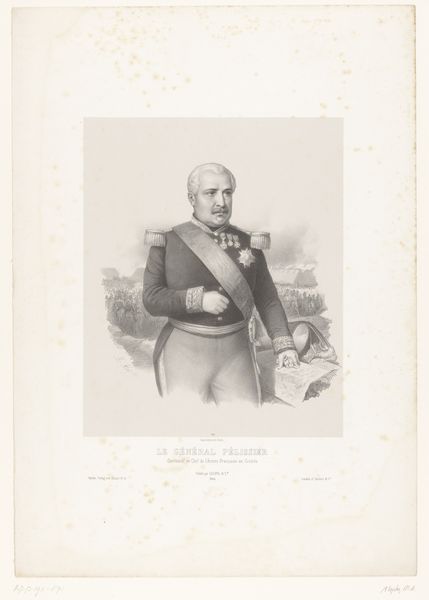
drawing, engraving
#
portrait
#
drawing
#
romanticism
#
academic-art
#
engraving
Dimensions: height 359 mm, width 257 mm
Copyright: Rijks Museum: Open Domain
Editor: This is a portrait of Ferdinand-Philippe, Duc d'Orléans, by Antoine Maurin, made sometime between 1842 and 1851. It’s an engraving, so mostly black and white, but there’s such fine detail and shading that it feels incredibly lifelike. What elements of composition and form stand out to you the most in this piece? Curator: Primarily, I am drawn to the use of light and shadow. Note how Maurin manipulates value to sculpt the Duke’s face, highlighting his features while simultaneously creating a sense of depth and gravitas. Consider, also, the lines—both the crispness defining the military garb and the softer rendering of the hair. What does this juxtaposition suggest to you about the artist's intent? Editor: It almost feels like he's emphasizing both the Duke's status and his humanity. The formal military dress is so sharply rendered, but his face is much softer, almost…vulnerable. Curator: Precisely. Observe how the texture achieved through the engraving technique—the minute, controlled marks—contributes to the overall impression. It moves beyond simple representation, doesn't it? The use of line and value to convey depth and texture are meticulously deployed in this work, no? Editor: Yes, absolutely. Now I see how those minute details all contribute to this layered experience. Curator: Indeed. We begin to discern not just a likeness, but an evocation of character rendered through strictly formal means. Considering how line, texture and value have informed the artwork is really interesting. Thanks. Editor: Yes, thanks for walking me through that; it's definitely changed how I'm going to look at engravings moving forward.
Comments
No comments
Be the first to comment and join the conversation on the ultimate creative platform.
